What Most People Don't Know About Ground Beef
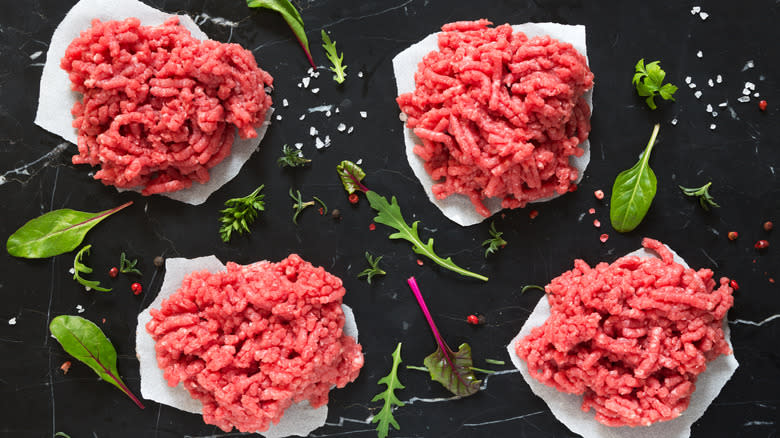
What could be more basic than ground beef? It's beef, it's been ground up. Throw it in a pan and stir it, and soon you'll have protein for a meal. It's versatile and usually very affordable. However, it's also a lot more interesting than you may realize.
For one thing, the ground beef you buy may not be from the location you think it's from, and how you handle it during cooking has more of an effect on the final dish than you might think. Ground beef also has different safety issues than whole cuts, and the characteristics that you thought you could rely on to tell you when the beef was cooked may not be as accurate as you thought. Ground beef is a readily available protein -- not to mention easy to make into weeknight dinners -- and it's worth your time to take a closer look at it.
Read more: Cuts Of Steak, Ranked Worst To Best
Ground Beef Is Pure Animal
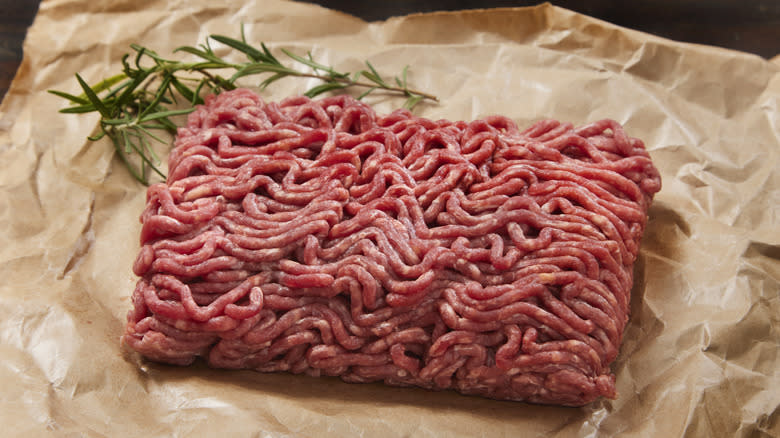
You generally get what you see when you buy ground beef. U.S. law requires that ground beef be nothing but beef -- no added water or other additives allowed, other than seasonings. If you're wondering about the inclusion of pink slime, we'll get to that in a bit.
A lot of meat is processed when frozen, so if some ice particles stuck to the beef after it was ground, then you might see some water in the ground beef you get. But that's not the same as adding water to increase weight or to give the product a plump appearance. You'll also find that packaged meat is often treated with gases, including carbon monoxide, to affect the color. But the meat can't contain any binders.
Now, about the pink slime. Back in 2012, ABC News ran a report on something called "lean finely textured beef," which was really beef trimmings that had been put through a centrifuge to separate the meat from fat and other non-muscle material, and then treated with ammonia to kill off bacteria. The product is entirely meat, but ABC News decided to call it "pink slime," and at the time, the USDA didn't consider it a quality product. The resulting brouhaha led to lots of meat being pulled from shelves. In 2019, however, the USDA agreed that the product could be called ground beef. It is regarded as safe to eat.
Ground Beef, Beef Patties, And Hamburger Meat Are Not The Same
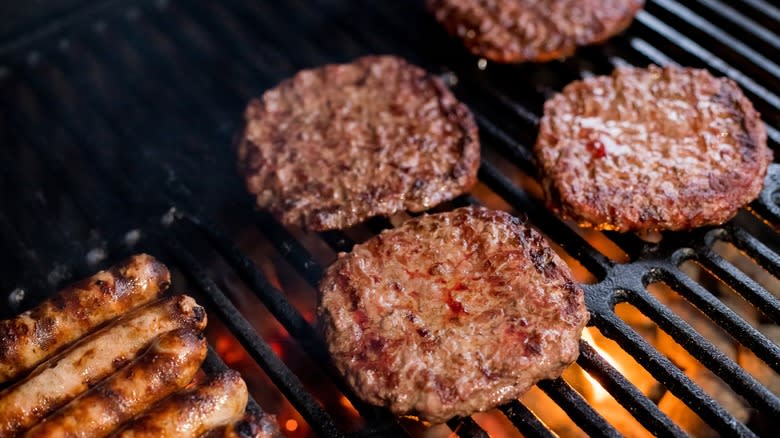
Ground beef, beef patties, and hamburger meat are all made from ground meat and can all be used for burgers, but they're not the same products. Ground beef and hamburger meat differ in that producers can add beef fat to hamburger meat to increase the fat percentage. However, hamburger meat, like ground beef, can't exceed 30% fat. Beef patties are mainly made from ground beef, but they can have the addition of partially defatted chopped beef.
As you can see, these names don't really affect how you use the products; they're mainly for regulatory purposes to ensure the consumer knows what's in each type of beef. You can make hamburger patties at home from plain ground beef instead of hamburger meat if you want. If you want to be sure you're not getting any sort of partially defatted product or added fat, try to buy ground beef from a butcher who will grind a cut of meat that you choose.
Never Eat Raw Ground Beef
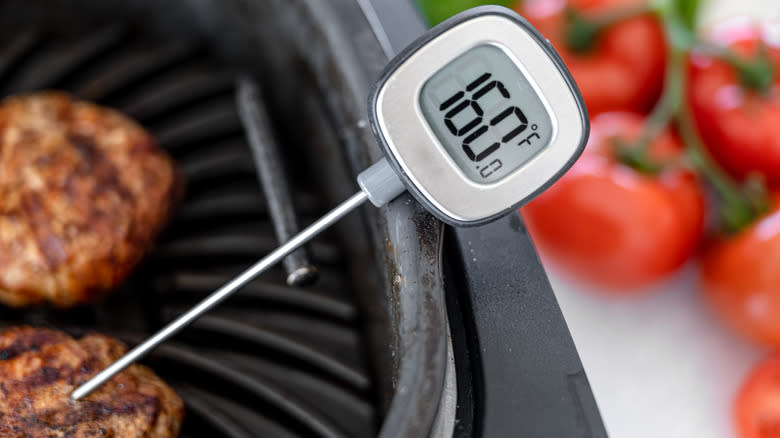
Ground beef always needs to be cooked to at least 160 degrees Fahrenheit. Yes, yes, there are many who like a little pink in their burgers, but if you're one of them, consider learning to love the higher temperature. The exterior of a cut of meat usually has pathogens like bacteria on it. When a butcher or processor (or you -- whoever is doing the work) grinds up meat, the exterior and interior become fully mixed. That means that those pathogens could now be in the center of that wad of ground beef.
When you cook a steak, you can leave the center less cooked because those pathogens usually aren't in the center of the cut. However, when you cook ground beef, you have to cook the whole thing thoroughly to ensure that any pathogens in the center of the meat have been destroyed, and 160 degrees is usually good enough. Be aware that the color of the patty doesn't indicate temperature, so use a thermometer.
What about steak tartare, though? This is essentially chopped raw meat piled on a plate, so why is that safe to eat? That has to do with the environment. The restaurants that serve this know who is supplying the meat, and they maintain a high level of hygiene that surpasses what most home kitchens have. Don't attempt to make steak tartare at home because you likely won't be able to reproduce the same environment.
Rinsing, Draining, And Other Grease-Removal Methods Are Controversial
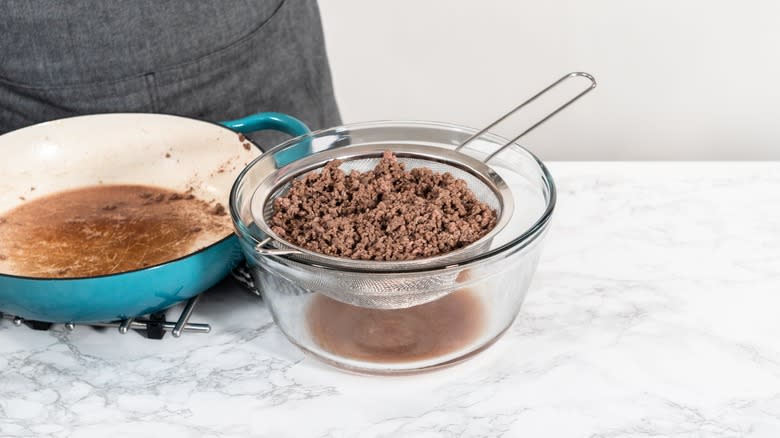
Ground beef produces a lot of liquid grease when you cook it, especially if the ground beef isn't on the leaner side. If you don't want a lot of fat in the meat, you have a few options for removing it. This includes patting the grease off, draining the grease, and even rinsing the cooked beef. However, there's not a lot of agreement over which is best, and rinsing specifically gets the most debate. Draining isn't that controversial, but you may want to look for the leanest ground beef you can find to reduce the amount of fat you have to deal with in the first place. Why cook fatty meat only to drain all of the fat away?
Rinsing -- literally pouring hot water over cooked ground beef in a colander and letting it drain -- may remove a substantial amount of fat, but it's not a favorite for two reasons. One, it just makes the meat soggy, and two, if any of that grease lands in your sink drain, you're not doing your plumbing any favors. While the amount you rinse away may seem inconsequential, it can join up with all the other fat and grease headed down other drains. This is how cities end up with infrastructure-clogging fatbergs.
Ground Beef Is Often Imported To The U.S.
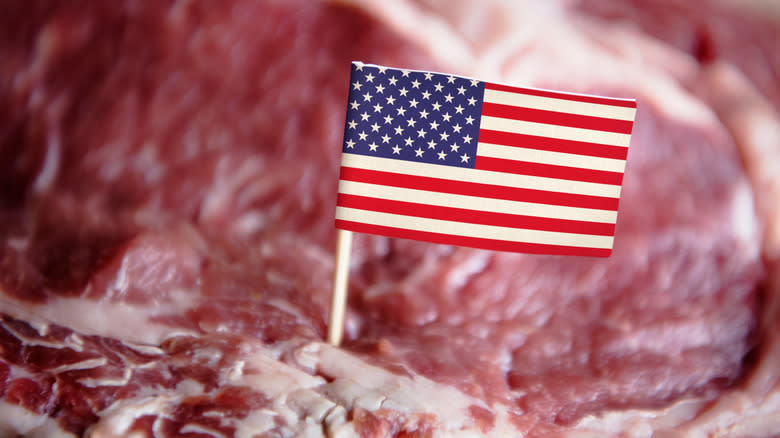
Ranches and herds of cattle are such integral parts of the image of the American West and Midwest that the idea of the country's ground beef supply coming from imports sounds ludicrous. But it's true: Around 20-30% of the U.S.'s ground beef is imported from other countries. It's a matter of economics and producers trying to get the most money for each cut.
The tl;dr explanation, according to South Dakota State University, is that the cuts that could be used for ground beef are ones that American beef producers can sell as exports for more money than they'd get by selling them here for ground beef. So, if they turned all those cuts into ground beef and sold them here, they wouldn't make as much as they would by selling them as whole cuts elsewhere. Unfortunately, that means that U.S. consumers can't get the ground beef they want unless the country imports ground beef from elsewhere. In fact, the USDA says the U.S. is the world's second-largest importer of beef, and most of that is trimmings that get turned into ground beef.
Both Salt And Over-Kneading Make Ground Beef Tough
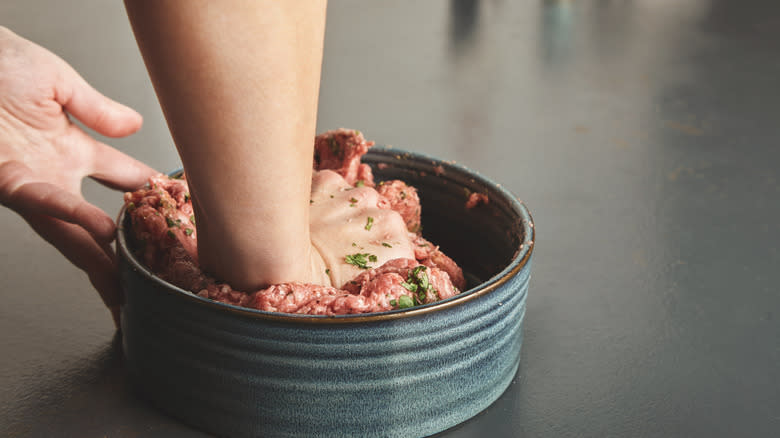
When you cook ground beef, you want the final product to have a nice, tender bite, with just the right amount of crumbling. Two things greatly affect your chances of achieving that. One is salt; if you're going to add salt to the meat, wait until you're just about to put the meat in the pan or on the grill. Salt pulls moisture out of meat, and unless you really want to make that meat dry, you don't want to add the salt until you're just about ready to cook the meat. Add the salt earlier than that, and your final dish could be tougher than you like. There are times when you'll want to salt meat well ahead of cooking, often as part of a brine -- but that usually refers to whole cuts and requires hours, if not a day, of preparation.
Another common mistake with ground beef is overworking or over-kneading the meat. Just as overworking dough affects the strength of the gluten and makes the resulting bread have a terrible texture, over-kneading ground beef makes the resulting dish too tough. Meat has a protein called myosin, which bands together when you knead or mix ground beef. It leads to a more cohesive structure, but when that beef is cooked, it turns out much too hard.
Overcrowding The Pan Leads To Steaming Meat
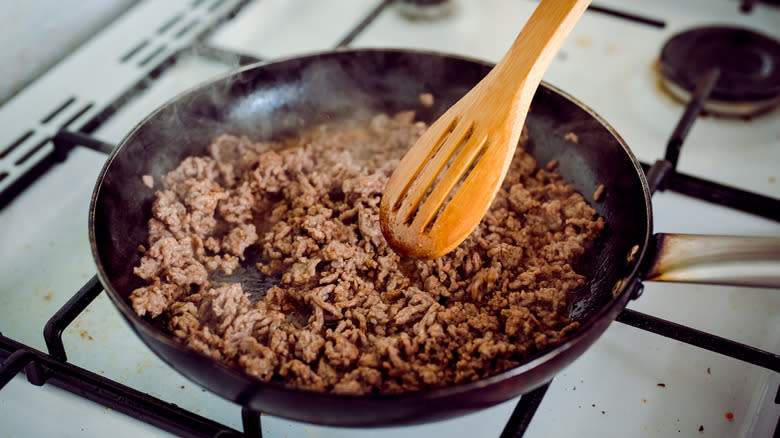
One of the first steps in most recipes that use ground beef is to brown it, or to cook it just enough so that the red is gone. You do this by pan-frying the beef and stirring it around, but you have to be careful just how much you attempt to brown at once.
Placing too much beef in a pan can thwart your attempt to brown it and instead lead to steaming it. Maybe you dumped a couple of packages of beef in a large pan, not realizing just how much meat that really is once it's been let loose from the confines of the wrappers. Or, maybe you grabbed a pan that was smaller than you wanted. Either way, stuffing the pan full of ground beef will lead to steamed misery because the water that the meat releases won't evaporate properly. Instead, it will pool around the beef, and what does evaporate will envelop the meat in steam.
When you use the right size of pan or limit the amount of beef you add to a pan, the beef will still release moisture, but the moisture will sizzle away, leaving the beef with the oil and any released fat. If you find you've overcrowded the pan with beef, remove some of the beef and drain the excess liquid. You'll have to cook in batches, but the results will be a lot better and much tastier.
Grass-Fed Ground Beef Can Have A Wildly Different Nutritional Profile
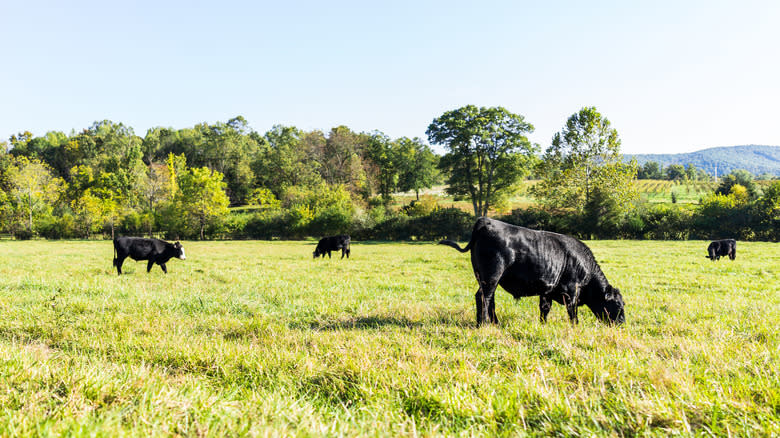
Ground beef can come from either grass-fed or grain-fed cattle, and as you can guess, that difference in origin affects the types and amounts of nutrition that you get from the beef. Both types of ground beef are nutritious, of course, so if all you have in the freezer is ground beef from conventional grain-fed cattle, that's still a great source of protein, minerals, and vitamins.
But grass-fed ground beef may have more omega-3 fatty acids -- we're talking up to double or even triple the amount in grain-fed -- plus higher vitamin and mineral amounts. Grass-fed beef is also lower in calories due to having less fat than grain-fed beef. However, keep in mind that the cooking method plus the nutritional profiles of the foods you eat along with the beef also affect the amount and types of nutrition your body absorbs. Some studies show that there's not much difference between the two in terms of cholesterol and effects on diabetic markers like plasma insulin. It's really going to be personal preference that drives whether you use grain-fed or grass-fed ground beef.
Ground Beef Is The Top-Selling Type Of Beef In The U.S.
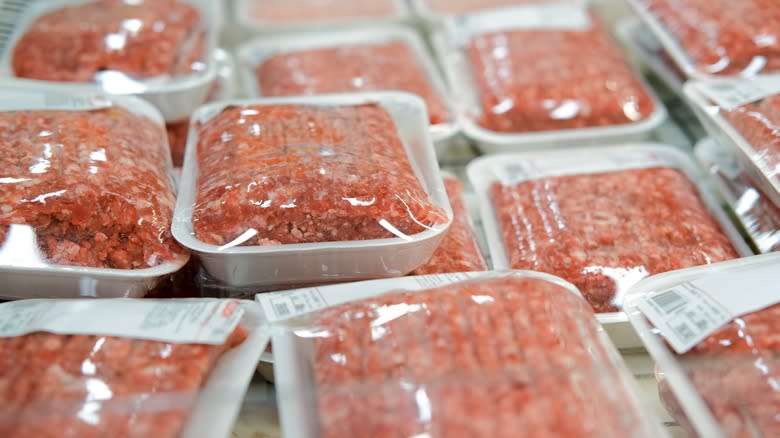
Ground beef can be used in so many different recipes that it's not really a surprise that it's become the top-selling type of beef in the United States. In 2020, ground beef accounted for 46% of beef sales, and by November 2022, it accounted for 51% of sales by volume. In fact, ground beef's popularity has held even as prices increased. Ground beef packaged in standard tray form sells a lot better than bulk chubs or pre-formed patties.
Of the different cuts that could form ground beef, general "ground beef" with no specific cut name remains the most popular; ground chuck comes in a distant second. Much of the ground beef sold is from cattle that don't have a specific breed noted, but when customers buy ground beef that's from a specific breed, they usually buy Angus beef.
The Package And Grind Size Can Affect How The Beef Looks
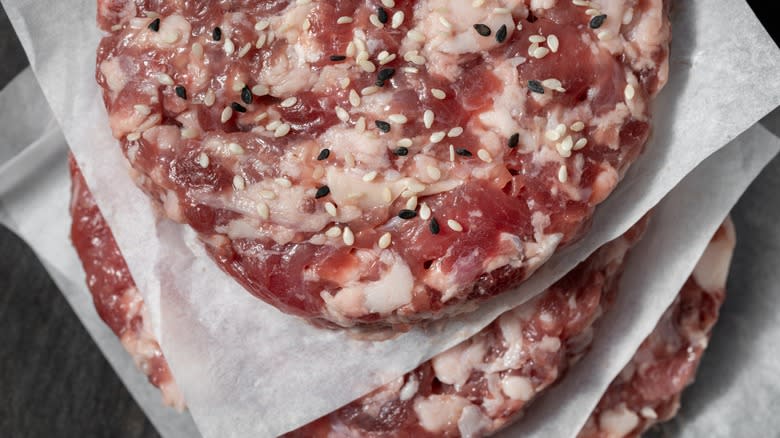
You could gather packages of fresh, unspoiled ground beef from several stores, and chances are the beef in a lot of those packages would not look the same. Some would be more or less red, some might look chunkier than others, and yet others might have more spots of fat. This has to do with both the packaging and the grind size.
The packaging materials can make the beef look very, very different. You'll learn more about this in the next section, but in a nutshell, wrapping that prevents oxygen from reaching the beef may make the beef look more brownish than red, while packaging that allows some oxygen through will make the beef look red. The grind size has a major effect in that the smaller the grind, the smoother the mix of meat and fat. You may not see as much variation in color with very small grind sizes because everything is mixed more thoroughly. Larger grind sizes may produce ground beef that looks more marbled; the larger grind leaves more of the fat intact instead of mixing it in with the meat.
Red Coloring Isn't A Reliable Sign Of Quality
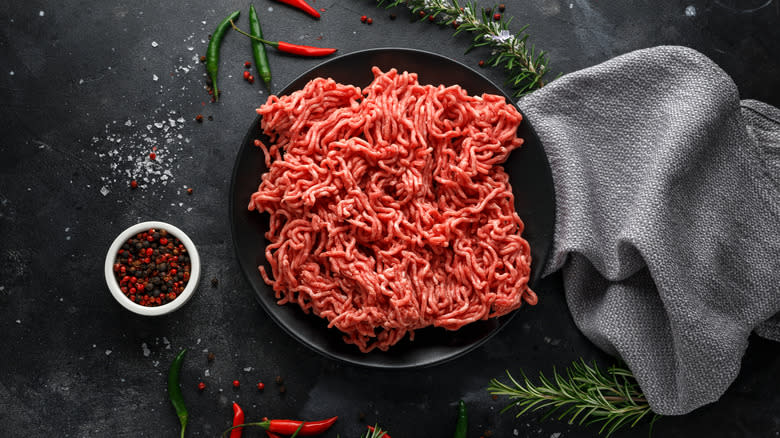
A package of ground beef that's mostly red with some pink and white fat particles may look fresh, but that supposedly splendid color is not a sign that the meat is good, or even safe. Meat can change color depending on what it's been exposed to. For example, when you cut into a wad of ground beef, the interior could be a dark purplish or grayish-brown color instead of red; that just means the interior hasn't been exposed to oxygen while the exterior has. Meat contains a protein called myoglobin that's naturally darker in color. When the meat is exposed to air, the myoglobin reacts with oxygen to form oxymyoglobin, which is a brighter red color. You can even experiment with this by cutting through a lump of ground beef and watching the brownish interior gradually turn redder.
In meat that's been wrapped in plastic, the exterior of the beef appears red due to either a special permeable wrap that allows oxygen through, or the addition of a mix of gases that includes oxygen. And if the meat's been sprayed with carbon monoxide, then that will appear to have a red color, too.
To make matters more confusing, beef that's perfectly safe to eat will continue changing color. If the oxymyoglobin that made the meat turn red continues to mix with oxygen, the meat may turn a brownish color. This can happen even if the beef is stored in the refrigerator.
Other Coloring May Very Well Indicate Bad Quality
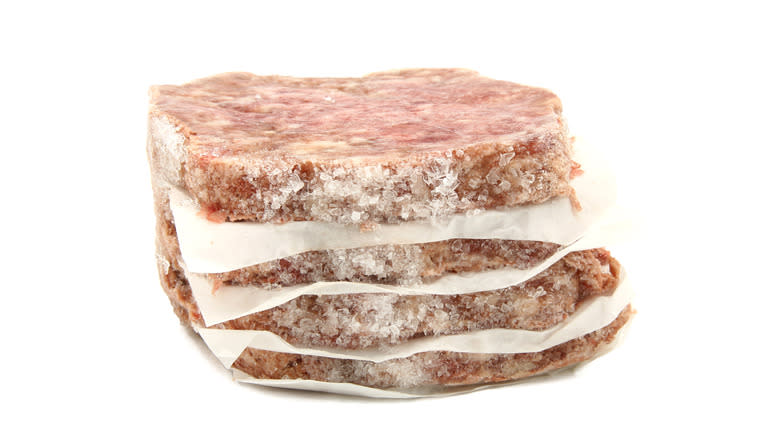
If you want to check whether ground beef is safe to eat, the sniff test is usually your best bet. But some colors can indicate spoilage, despite everything you just learned about color not necessarily being a good indicator of quality. Blue or white meat (that isn't the occasional dot of whitish-pinkish fat) indicates the presence of mold. Beef that's grayish-brown (or even just grayish) on the inside could be perfectly fine to eat, but fresh beef that's gray on both the outside and inside likely isn't safe.
If the beef is frozen, there's another color change to look for that indicates freezer burn. If you take a package of ground beef out of the freezer and find that there are grayish spots on it accompanied by ice crystals, those spots are likely freezer burn. (This assumes the freezer has been working well the entire time the meat was stored in it and that the meat was fresh when you placed it in there.) That beef would be safe to thaw and cook, but the texture would probably be tough and unpleasant.
Read the original article on Mashed

